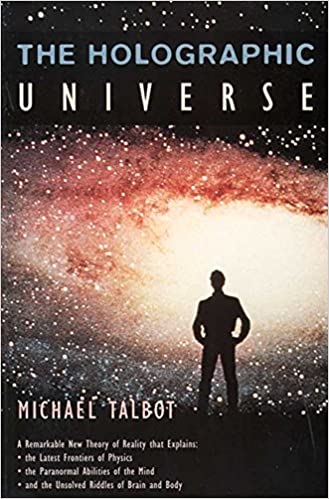

One of the books that has most influenced my writing, and in particular, my ideas about narrative structure, is Michael Talbot’s The Holographic Universe. When I came upon it a few years ago, I was already a fan of the works of Canadian novelist Douglas Glover and his concept of the story as net. In other words, even without the scaffolding of a formal plot (ye olde Fichtean curve), a net of images can cohere and indeed so powerfully resonate in the reader’s mind that the net is the story. A satisfying story. It was directly— literally, less than an hour— after reading Glover’s essays on the story as net and the novel as poem (now collected in Notes Home from a Prodigal Son) that I sat down wrote the one that became the title story for my first collection, Sky Over El Nido. In this story the images, woven throughout, have to do with flight: birds, nests, eggs, airplanes. What’s the “plot”? A fistful of air.
Later, before beginning to write my novel, The Last Prince of the Mexican Empire, I happened upon Talbot’s The Holographic Universe, an elegantly lucid and very accessible overview of some of the (then) most cutting-edge theories in quantum physics and in particular, those of David Bohm. If the universe itself is a hologram, or has holographic characteristics, then this could explain why nets of images— the suggestion of the whole in each of its parts— can resonate with such strange power in a reader’s mind.
Does my novel have that power? You decide. But one of the several paradigms I worked with while writing it was, again, the story as a net and, to borrow the title of one of Douglas Glover’s essays, “The Novel As Poem.” Yes, The Last Prince of the Mexican Empire is a poem. And the main character is not a person but an idea— the prince as living symbol of the future of the empire. Where does such an idea live? In many minds— ergo, the novel has a crowd of characters, indeed, a net of characters, woven in among each other’s minds and actions.
Just of few of the fleeting and repeating images: the Totonac bowl, Egypt, birds, sweets, twilights, composers, asparagus.
(Though indeed it does have a plot, and I worked with various paradigms— Fichtean curve, Syd Field’s three acts, and others— while constructing it.)
Last night, I happened upon a video of psychologist Jeffrey Mishlove’s interview with Talbot. It’s well worth watching in its entirety. Alas, Talbot died of leukemia in 1992.

From the Writer’s Carousel: Literary Travel Writing
A Visit to the Casa de la Primera Imprenta de América in Mexico City
Marfa Mondays’ Shiny New Website
#
Find out more about
C.M. Mayo’s books, articles, podcasts, and more.

